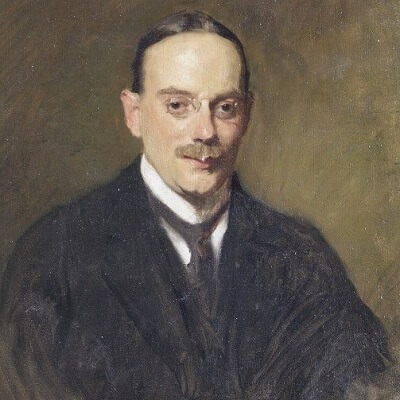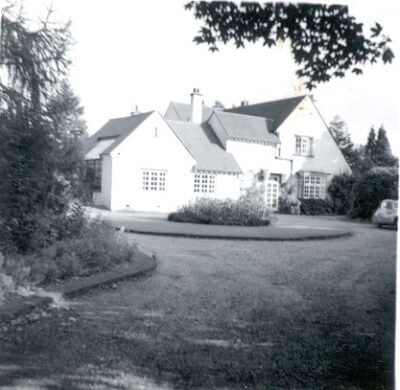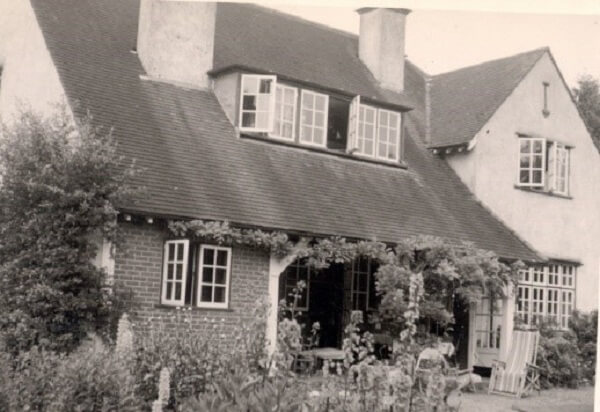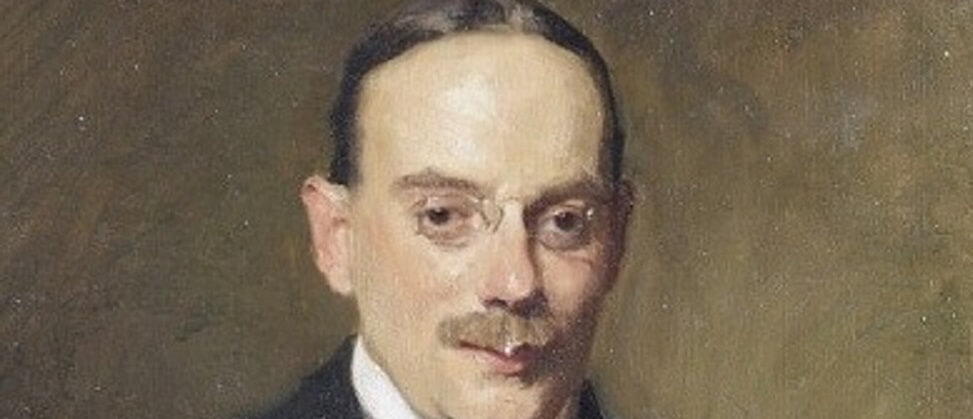Dr Bertram Louis Abrahams
by Alison Bailey, March 2023
Bertram Louis Abrahams (1870-1908) BSc Lond(1890) MB(1894) MRCS FRCP(1904)
The first official railway service to Amersham left Baker Street at 10.47am on 1 September 1892. This established Amersham as a town within easy reach of the capital, and the ideal location for a weekend, country retreat for London’s more affluent residents. Some key figures in medical history, such as Arthur Pearson Luff and Sir Frederick Walker Mott, had weekend houses here. Their families could enjoy all the leisure and health benefits of the lovely Chiltern countryside, whilst they could easily travel back to work in London.
Dr Bertram Abrahams bought land in Amersham after renting a house for his wife, who enjoyed walking in the countryside with her friends. Abrahams had a consulting practice and family home in Welbeck Street.
Career

Abrahams qualified as a doctor in 1890 at University College London where he gained first class honours in both medicine and forensic medicine. He then obtained resident posts at University College Hospital and became physician to the St. George’s and St. James’s Dispensary. In 1899 he was appointed registrar, and in 1903 assistant physician, to the Westminster Hospital, where he lectured on physiology and medicine. In 1904, he was appointed a Fellow at the Royal College of Physicians.
He was awarded many prizes and honours for his work, and original research on diseases of the gall bladder. He worked for London County Council as a medical inspector and established a pioneering clinic in the East End to treat infectious skin conditions caused by poverty and poor nutrition.
He was an accomplished linguist and edited a German-English dictionary of medical terms. He also reviewed many foreign scientific works for English medical journals. He wrote articles for Allchin’s Manual of Medicine and was Arris and Gale lecturer at the Royal College of Surgeons in 1906-7.
Personal Life

Bertram Abrahams was the only son of Fanny and Louis Barnett Abrahams, the headmaster of the Jews’ Free School, Spitalfields. He was born in London in 1870 and educated at the City of London School. In 1896 Abrahams married Jane Simmons at the Bayswater Synagogue. Jane’s father, (Abraham) John Simmons established the successful theatrical costumiers, A J Simmons, which later became the fashion house, John Simmons & Sons. The Abrahams’ daughter, Margery, was born at the end of 1896. Margery Abrahams became a pioneering dietician at St Barts Hospital.
After buying 16 acres of land on Amersham Common the Abrahams built Chilterns, a large Arts & Crafts style house, set back from the White Lion Road, where Lincoln Park is today. This was an escape from London for Jane and Margery, but it also gave Abrahams more opportunities to play his beloved cricket. He played for Amersham and Bucks County Cricket Clubs and in 1908, was elected one of the vice presidents of the Amersham Club and the Honorary Secretary of the Bucks County Club. He was a founder and medical officer of the Jewish Lads’ Brigade, which was started by him taking teams of Jewish boys to Victoria Park, in the East End, to teach them cricket.

Abrahams suffered from a chronic kidney disease, then known as Bright’s Disease. To escape the cold of Britain he practised in Egypt for several winters and travelled abroad frequently. He was very knowledgeable about Italian and Greek art, and studied Ancient Greek and Roman remains in Italy, Sicily, and Greece. Abrahams died tragically young, at the age of 38 just after returning from a trip to Smyrna and Istanbul in Turkey.
The Bertram Louis Abrahams Lectureship in Physiology was founded in his memory at the Royal College of Physicians in 1941.
Sources
Royal College of Physicians
Bertram Louis Abrahams | RCP Museum (rcplondon.ac.uk)
The Jewish Chronicle, June 26, 1908

